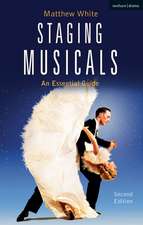Fire and Desire: Mixed-Race Movies in the Silent Era
Autor Jane M. Gainesen Limba Engleză Paperback – 22 mar 2001
In the silent era, American cinema was defined by two separate and parallel industries, with white and black companies producing films for their respective, segregated audiences. Jane Gaines's highly anticipated new book reconsiders the race films of this era with an ambitious historical and theoretical agenda.
Fire and Desire offers a penetrating look at the black independent film movement during the silent period. Gaines traces the profound influence that D. W. Griffith's racist epic The Birth of a Nation exerted on black filmmakers such as Oscar Micheaux, the director of the newly recovered Within Our Gates. Beginning with What Happened in the Tunnel, a movie that played with race and sex taboos by featuring the first interracial kiss in film, Gaines also explores the cinematic constitution of self and other through surprise encounters: James Baldwin sees himself in the face of Bette Davis, family resemblance is read in Richard S. Robert's portrait of an interracial family, and black film pioneer George P. Johnson looks back on Micheaux.
Given the impossibility of purity and the co-implication of white and black, Fire and Desire ultimately questions the category of "race movies" itself.
Fire and Desire offers a penetrating look at the black independent film movement during the silent period. Gaines traces the profound influence that D. W. Griffith's racist epic The Birth of a Nation exerted on black filmmakers such as Oscar Micheaux, the director of the newly recovered Within Our Gates. Beginning with What Happened in the Tunnel, a movie that played with race and sex taboos by featuring the first interracial kiss in film, Gaines also explores the cinematic constitution of self and other through surprise encounters: James Baldwin sees himself in the face of Bette Davis, family resemblance is read in Richard S. Robert's portrait of an interracial family, and black film pioneer George P. Johnson looks back on Micheaux.
Given the impossibility of purity and the co-implication of white and black, Fire and Desire ultimately questions the category of "race movies" itself.
Preț: 323.69 lei
Nou
Puncte Express: 486
Preț estimativ în valută:
61.94€ • 64.28$ • 51.78£
61.94€ • 64.28$ • 51.78£
Carte tipărită la comandă
Livrare economică 17-31 martie
Preluare comenzi: 021 569.72.76
Specificații
ISBN-13: 9780226278759
ISBN-10: 0226278751
Pagini: 352
Ilustrații: 36 halftones
Dimensiuni: 152 x 229 x 25 mm
Greutate: 0.55 kg
Ediția:1
Editura: University of Chicago Press
Colecția University of Chicago Press
ISBN-10: 0226278751
Pagini: 352
Ilustrații: 36 halftones
Dimensiuni: 152 x 229 x 25 mm
Greutate: 0.55 kg
Ediția:1
Editura: University of Chicago Press
Colecția University of Chicago Press
Notă biografică
Jane M. Gaines is the Director of the Program in Film and Video and a professor in the Graduate Program in Literature as well as the Department of English at Duke University. She is the author of Contested Culture: The Image, the Voice, and the Law and coeditor of Collecting Visible Evidence.
Cuprins
List of Illustrations
Acknowledgments
Note on Film Dates
Introduction - The "Race" in Race Movies
1. "Green Like Me"
2. Desiring Others
3. Race Movies: All-Black Everything
4. World-Improving Desires
5. Fire and Desire
6. The Body's Story
7. Race/Riot/Cinema
Conclusion - Mixed-Race Movies
Notes
Index
Acknowledgments
Note on Film Dates
Introduction - The "Race" in Race Movies
1. "Green Like Me"
2. Desiring Others
3. Race Movies: All-Black Everything
4. World-Improving Desires
5. Fire and Desire
6. The Body's Story
7. Race/Riot/Cinema
Conclusion - Mixed-Race Movies
Notes
Index









